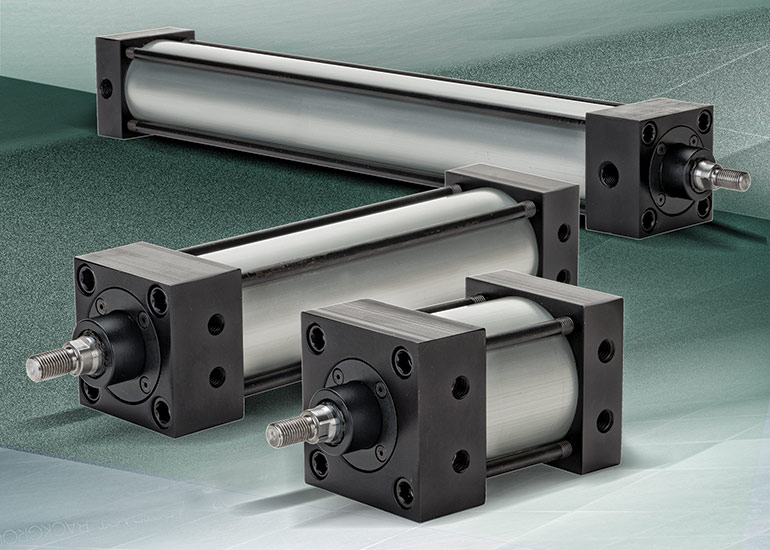By Josh Cosford, Contributing Editor
Pneumatic actuators take advantage of compressed air to provide your machine with quick and powerful actuation of nearly infinite possible functions. Pneumatic actuators may take the form of cylinders, motors, slides, grippers and rotary actuators, each of which receives pressurized and compressed air to create linear or rotational force.

The pistons or vanes of pneumatic actuators produce force when delivered with pressurized air. Because of the compressibility of air, pneumatic actuators are sensitive to both back pressure and flow restrictions. To get around the complexities of variability, we express the forces applied via pneumatic actuators in terms of differential pressure rather than the inlet pressure. In other words, the force generated by a pneumatic actuator is defined by the difference between the pressure at the actuator’s inlet port compared to its outlet port.
Because of the relatively clean air operating pneumatic actuators, any leaks result in a loss of performance and reduction in efficiency rather than a possible hydraulic oil leak that makes a mess at best and contaminates the environment at worst. However, many pneumatic actuators require lubrication for performance and longevity, so be sure to study your product documentation to check the requirements of your actuator.
Pneumatic cylinders
The cylinder is the most popular pneumatic actuator — consisting of a piston and rod assembly installed into a barrel and capped on either side to contain both working and load pressure. When one of two ports has directed air from an upstream valve, the cylinder will extend or retract with force equal to the previously mentioned pressure differential factored with the piston’s surface area. A cylinder with a larger bore will have more surface area and, subsequently, more force when applied with a given pressure differential. Cylinders may also be single-acting, pressuring in one direction only while employing gravity or springs to retract.
Cylinder bodies must include the mounting method, which is fixed to the machine’s frame or support. Conversely, the cylinder’s rod end attaches to the machine component which moves under load. Should that loaded component move through a radius or arc, the cylinder’s pivot method must be included, such as with a trunnion, clevis or eye.
Pneumatic cylinders come in various construction styles; NFPA tie-rod, extruded body ISO, pancake style and compact round line, to name a few. A technology unique to pneumatic actuators is the rodless cylinder, which uses a magnet or mechanical coupling that attaches the rodless piston to the mounting platform. Rodless cylinders typically operate as non-rotating slides for positioning applications in automation.
Air motors
Some pneumatic actuators operate with rotational torque rather than linear force. Air motors are efficient, high-speed actuators used for drilling, milling, conveying and tool operation. Air motors have low inertia, which allows them to accelerate and decelerate rapidly while spinning quickly to high speed. Air motors may stall with no trouble, but a rotary actuator makes a great choice if you require partial rotation for your application. Vane-type rotary actuators offer snappy action between two discrete machine positions. Still, rack and pinion style actuators use dual air cylinders to offer up to a thousand degrees of rotation or more.
Filed Under: Components Oil Coolers, Cylinders & Actuators, Engineering Basics, Pneumatic Tips